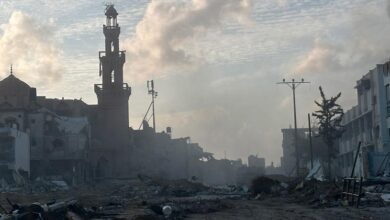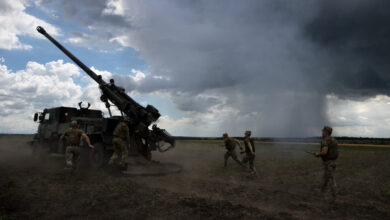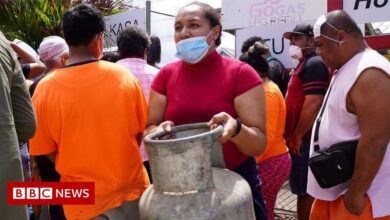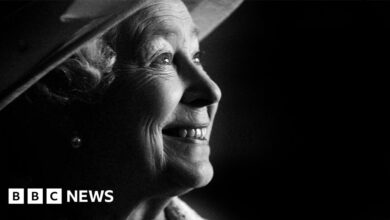First person: Recovery journey in Ukraine

Manfred Profazi, who lives in Vienna, Austria, has visited some of the regions in Ukraine that have been hardest hit in the more than 13 months of conflict following Russia’s full-scale invasion.
He told UN News what he had seen across the devastated country and how IOM provided comfort to those forced to flee their homes due to fighting and bombardment of civilian areas.
“Traveling in Ukraine these days is not easy. When I served as the Head of Mission of the International Organization for Migration from 2012 to 2017, I could fly or take one of the modern trains across the length and breadth of this vast country. .
Now traveling by plane is completely impossible, and traveling by train is still difficult.
My journey this week in Ukraine, from Odesa and Mykolaiv in the south, Dnipro in the east, to the capital Kyiv and again west to Lviv, for security reasons, is by road.
It gives me plenty of time to think about the millions of Ukrainians who have walked the same paths out of danger and devastation since the beginning of the war.
Millions of people are in a state of constant change, caught between being displaced on their own land, or their families torn apart. Some stay in Ukraine because they can’t afford to leave, some because leaving is simply not an option.

A group of mostly women and children arrived in Kyiv in April 2022 after being evacuated from the southern city of Mykolaiv.
More than 8 million Ukrainians have left the country, another 5.3 million are internally displaced. Many people have had to relocate many times. Some have traveled abroad, returned, settled and left again when the front line changed.
This sense of dislocation even affects communities and those who have not yet been resettled. The community was crushed, destabilized, scattered. The damage in places like Mykolaiv, and the countless small towns and villages I passed through this week, has left scars on the landscape and emotions.
Mykolaiv was shelled daily for more than 250 days. The water pipe was hit hard. We saw people queuing for drinking water at public distribution points, some established by the IOM, as we walked through the city.
Rise from the ruins
Living conditions are very difficult for local people as well as internally displaced people. However, everyone stayed. Everyone is returning. More than 5.6 million. People are adjusting to being in new host communities and are bringing their skills and experiences to help rebuild their new homes.
To put it mildly, rebuilding and rebuilding in the middle of the war was a challenge, of course, but everywhere I went, I saw new infrastructure sprouting from the rubble. Much of it, I’m proud and humbled to say, has been installed by the IOM and by the organizations that work with us, and with the local government, who have done so much to keep hope alive.
One of the many examples is a mobile heating plant, essentially a hangar for a 40-ton truck, specially adapted to provide heat for a children’s hospital, where hundreds of children – local and evacuated – can be treated continuously. Power outages due to shelling damaged the heating system, and for several days the young patients were left in freezing cold conditions.

IOM Regional Director Manfred Profazi chats with Valeria about her life as a resident in an IOM-supported dormitory in Dnipro.
I am fortunate enough to be able to hear first-hand accounts of survival, resilience, and even optimism from young and old alike. These stories and the dedication of our staff have kept us all motivated and focused on our support and facilitating recovery without causing dependency.
Looking back, I’m thinking of Valeriia and her son, who fled the destruction of Bakhmut and are now finally in decent places to live, thanks to repair work organized by IOM for a dormitory in Dnipro.
She showed me pictures of her house, now completely demolished, and spoke regretfully of her market garden. Now she has planted some trees in the window pane. Her son, a diligent student, keeps track of his lessons on his mobile phone, as he doesn’t even have a laptop. They did not give up; they do whatever it takes to keep a normal life.
IOM’s integrated approach allows us to support displaced people and host communities on multiple levels and provide them with a full range of services from infrastructure to income generation.
We will continue to work to support them for as long as necessary in any way we can.”
Read more here, about ‘s work IOM in Ukraine.

The International Organization for Migration (IOM) is ramping up efforts to help war-affected and displaced people cope with the cold weather.




